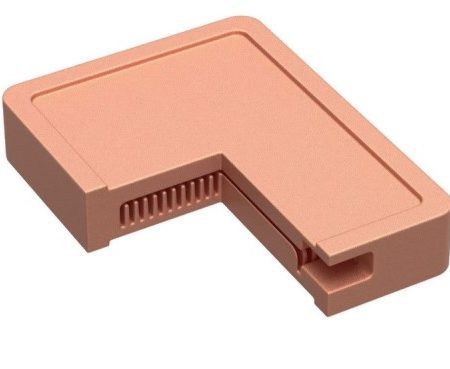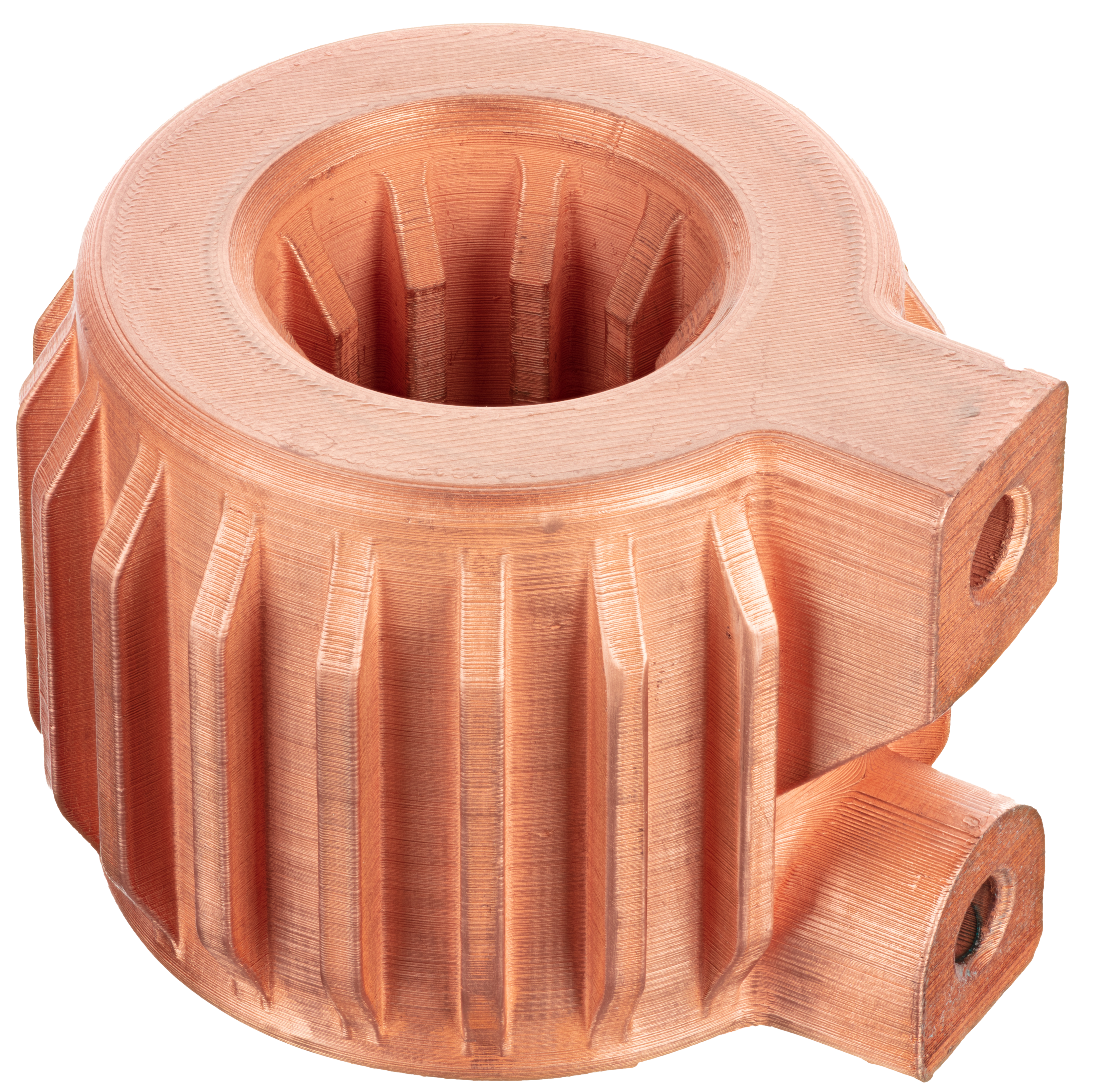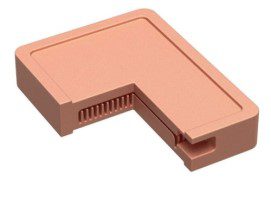Copper Material Safety Data Sheet
Desktop Metal's Composite Metal Rod, Copper - Material Safety Data Sheet
Read Morefor Desktop Metal®’s Production System™ (P1 &P50)

DESKTOP METAL®
Copper is known for its electrical and thermal conductivity and ductility, which make it ideal for electrical equipment, plumbing, and heat transfer applications. With Desktop Metal's Production System, you can 3D print electrically and thermally conductive components at scale, at a fraction of the cost of conventional manufacturing methods.
Pure copper has > 99.95% purity and it enables excellent thermal and electrical conductivity. You can print copper parts on the Production System™ with significant geometric complexity in a single step instead of brazing multiple conventionally produced copper components together. This way, manufacturers can eliminate a time-intensive and expensive process that is prone to error and waste. With the geometric freedom enabled by binder jetting, engineers can also explore new, high-performance designs to improve heat transfer. Lattice structures and conformal cooling channels are not possible with conventional manufacturing methods.


Material: Pure Copper, > 99.95% purity
Liquid cooling plates are used to regulate temperature on high-performance microprocessors. Coolant flows through the fins, which provide a large surface area to transfer heat from the passing fluid to the heat sink in order to cool the chip that is attached to the outer body.
These cooling geometries typically require capital-intensive, long lead time, and skilled labour-intensive production processes, such as skiving and machining, given the challenges associated with achieving precision and repeatability in such a small form factor. In addition, these commonly used conventional manufacturing processes are subtractive and produce excess scrap material, greatly increasing the associated part costs.
Whereas conventional production methods for this liquid cooling plate required machining and assembling multiple separate components due to restrictions on tool access, binder jetting on the Production System™ can produce the part as a single component, reducing manufacturing and operational complexity, part cost, and lead time. The Production System unlocks the capacity to print hundreds of cooling plates per day, enabling cost-effective volume production. Copper is the ideal material for heat exchangers due to its excellent conductivity, maximizing heat dissipation from the electronic chip to the cooling fluid.
ULTIMATE TENSILE STRENGTH¹
As sintered, ASTM E8
![]()
174 ± 5 MPa
¹YS & UTS properties noted represent mean values across XY orientation
YIELD STRENGTH¹
As sintered, ASTM E8
![]()
37 ± 3 MPa
¹*YS & UTS properties noted represent mean values across XY orientation
ELONGATION AT BREAK
As sintered, ASTM E8![]()
28 ± 5%
DENSITY
Tempered
![]()
8.65 ± 0.005 g/cm³
| Thermal & Electrical Conductivity | |
| Strength | |
| Heat Dissipation |
Ultimate Tensile Strength* |
Ultimate Tensile Strength*As sintered, ASTM E8: 174 ± 5 MPa*YS & UTS properties noted represent mean values across XY orientation |
Yield Strength* |
Yield Strength*As sintered, ASTM E8: 37 ± 3 MPa*YS & UTS properties noted represent mean values across XY orientation |
Elongation at Break |
Elongation at BreakAs sintered, ASTM E8: 28 ± 5% |
Coefficient of Thermal Expansion (ºC ) |
Coefficient of Thermal Expansion (ºC )
|
Electrical Conductivity* (%IACS) |
Electrical Conductivity* (%IACS)ASTM E1004: 90±1*Cubes with side lengths of 14 mm were used for electrical conductivity measurements |
Thermal Conductivity (W/m-K) |
Thermal Conductivity (W/m-K)ASTM E1461-13: 349 ± 7 |
Density |
DensityASTM B311: 8.65 ± 0.005 g/cc |
Surface Finish* |
Surface Finish*ISO 4287: 3 - 12 µm Ra*Surface roughness measured after sintering; the low end is top surface and the high end is z-direction. |
Desktop Metal's Composite Metal Rod, Copper - Material Safety Data Sheet
Read MoreDebind Fluid Material Safety Data Sheet for Desktop Metal's Studio System
Read More